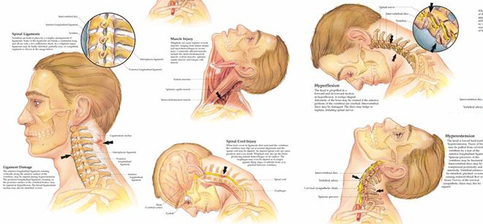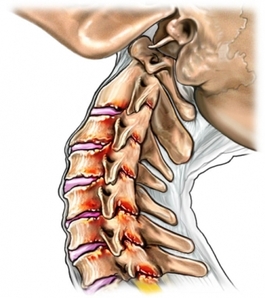Welcome to our Whiplash Information Page!
Here you will find various information regarding whiplash injuries and how whiplash occurs during a rear end car accident. If you or someone you know has sustained a whiplash injury, please contact our office today for more information and treatment options (909) 989-6980.
What is whiplash?Cervical acceleration/declaration injuries, more commonly known as whiplash, are one of the most common injuries resulting from automobile accidents. Pain resulting from a whiplash injury can be felt immediately or a few days to weeks after the accident. It is very common for patients to anxious and nervous after being involved in an automobile accident and immediate care for your injuries is vital. Please scroll down to the bottom of this page for more injuries and symptoms that can result from being in an automobile accident.
|
What happens during a whiplash injury?
Whiplash injuries are most common when your vehicle is struck from behind. As the other opposing vehicle strikes the back of your car, your vehicle is pushed forward into you, the occupant. As the car is being pushed forward, you begin to move backwards and come in contact with the seat. Using laws of motion, Newton’s 1st Law, we are able to determine that the occupant has a certain inertia that will resist this motion taking place. As the car continues to move forward, you the occupant must yield to these forces.
During this process the thoracic spine curve (your mid-back) and lumbar spine curve are being flattened due to a vertical compressive force that is being transmitted through the spine. As the compressive forces move up the spine, rising of your torso begins. Your body begins to ride up the seat backing. This process is referred to as ramping. As the body continues to move upward, the head must also follow Newton’s 1st law and resist the motion of the body. As the vertical forces continue upward into the neck, flexion of the upper cervical segments (the vertebral bones in your neck) and hyperextension of the lower segments occurs. These compressive forces then quickly give way to tension as the upward moving head and the downward moving body oppose each other. As the torso begins to move forward, the neck begins to pull the head along with it. The cervical spine is then forced in an “S”-shaped configuration, one of the main points of injury that occurs just before the head strikes the head restraint.
Depending on the placement of your headrest in relation to the top part of your head, head restraint contact will usually occur in about 100 milliseconds as the head is being forced into the head restraint. More like than not, the head restraint is placed in a lower position, intensifying the snapping back of the neck over the head restraint. This motion results in severe whiplash injuries. Any energry stored in the back of the seat will then be transmitted into you the occupant as you begin to move forward into the re-entry phase.
During this process the thoracic spine curve (your mid-back) and lumbar spine curve are being flattened due to a vertical compressive force that is being transmitted through the spine. As the compressive forces move up the spine, rising of your torso begins. Your body begins to ride up the seat backing. This process is referred to as ramping. As the body continues to move upward, the head must also follow Newton’s 1st law and resist the motion of the body. As the vertical forces continue upward into the neck, flexion of the upper cervical segments (the vertebral bones in your neck) and hyperextension of the lower segments occurs. These compressive forces then quickly give way to tension as the upward moving head and the downward moving body oppose each other. As the torso begins to move forward, the neck begins to pull the head along with it. The cervical spine is then forced in an “S”-shaped configuration, one of the main points of injury that occurs just before the head strikes the head restraint.
Depending on the placement of your headrest in relation to the top part of your head, head restraint contact will usually occur in about 100 milliseconds as the head is being forced into the head restraint. More like than not, the head restraint is placed in a lower position, intensifying the snapping back of the neck over the head restraint. This motion results in severe whiplash injuries. Any energry stored in the back of the seat will then be transmitted into you the occupant as you begin to move forward into the re-entry phase.
If you or someone you know has been involved in a car accident, contact our office today for more information regarding treatment options.
What are some injuries and symptoms that can result from whiplash?
|











